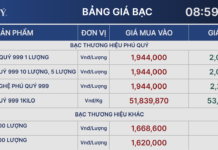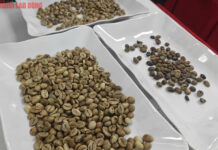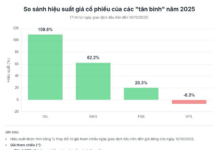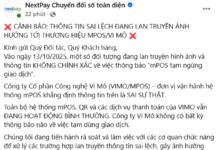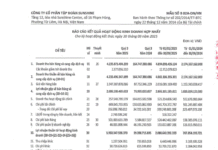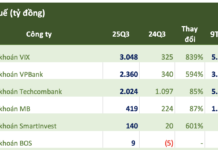Hoa’s Kitchen began as a small online kitchen, selling simple home-cooked meals during the 2020 pandemic. Over the past five years, it has blossomed into a well-known F&B brand in Hanoi. What started as a modest idea to earn some extra income has now grown into a team of over 300 people, serving more than 100 Vietnamese dishes, with online operations in Hanoi and Ho Chi Minh City, as well as four restaurants.
In this interview, Ms. Luong Vu Thieu Hoa, the founder of Hoa’s Kitchen, shared her entrepreneurial journey, valuable lessons learned, and her vision to promote Vietnamese cuisine globally. She also discussed the challenges and strategies in expanding from an online kitchen to a restaurant chain while maintaining the quality and authenticity of the food.
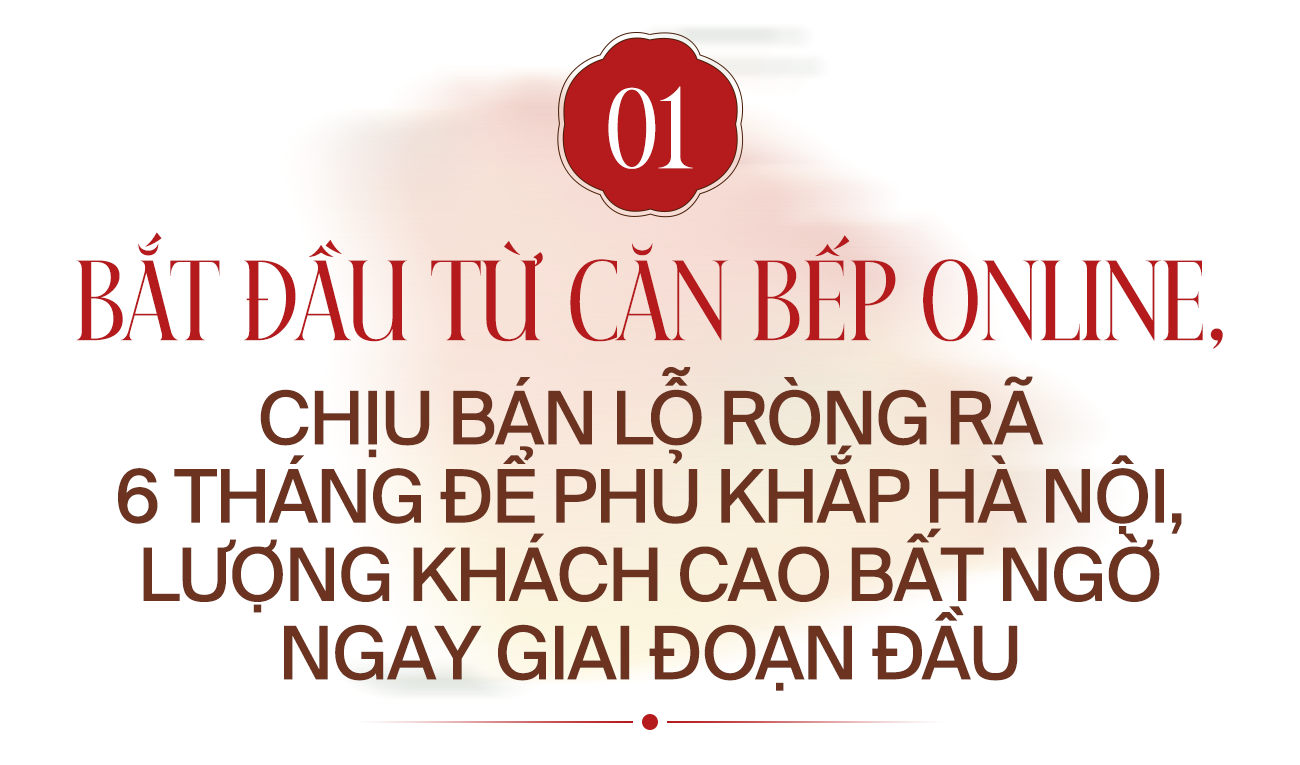
What inspired you to embark on this entrepreneurial journey with Hoa’s Kitchen five years ago?
I vividly remember the Covid-19 outbreak in 2020, when my family and I were quarantined at home. During those days, we frequently ordered food online. That’s when I had a thought, “Why don’t I start an online kitchen?” Initially, it was a simple idea to earn some extra money for my child’s milk and diapers. The goal was modest, and the initial investment was around 200-300 million VND.
I have been an entrepreneur for over a decade, and whenever an idea strikes, I take action without overthinking. By July, my husband and I started looking for a location and a head chef. In the beginning, our team consisted of my husband, a head chef, a close friend handling marketing, and a few others from previous business ventures. On August 31, 2020, Hoa’s Kitchen officially opened in a modest, simply renovated house.
The idea behind Hoa’s Kitchen was that simple, and the initial goal was merely to earn some extra income.
What was the turning point or market signal that made you decide to go all-in and fully commit to growing Hoa’s Kitchen?
Initially, the goal was modest, but once I started, I approached it with great determination. I offered super affordable combos and even sold at a loss to attract as many customers as possible. I set an ambitious target for my team: while it might take other brands five years to establish themselves in Hanoi, we had to do it in six months.
To achieve this, I increased our advertising budget significantly and invested heavily in marketing, accepting that we might not make a profit or even operate at a loss during this phase. I believed that if I focused too much on profits at the outset, our growth would be hindered. At that time, the only thing I needed was brand awareness and a high volume of orders. So, for the first six months, we incurred heavy losses, but I remained committed to investing in the business.
The growth was rapid and almost overwhelming. However, we had to pay the price during the 2020 Tet holiday when the number of orders exceeded our production capacity, leading to customer complaints and negative reviews on social media.
I took full responsibility for this situation. As the leader, I made a mistake by accepting more orders than we could handle. Part of the reason was my previous experience in the clothing business, where I handled thousands of orders daily, and I applied that mindset to F&B. However, the reality was different, and that mistake cost us dearly during that Tet holiday.
You mentioned that Hoa’s Kitchen initially sold at a loss. How long did it take for the business to break even and become profitable?
It took about six months to break even, and it was only after a year and a half that we started making a small profit.

What was the biggest challenge you faced in the early days of Hoa’s Kitchen?
I didn’t encounter any significant challenges. For me, the most difficult aspect of running a business is when your product isn’t well-received by customers or when you don’t know how to sell it. However, with Hoa’s Kitchen, we were fortunate to have customers from the very beginning, and the market embraced our concept. The focus then shifted to efficient operations and maintaining integrity, which is crucial in the F&B industry.
From the start, I adopted a strategy of selling at a loss to attract customers. To be honest, selling at a profit is more challenging than selling at a loss (laughs). Not everyone is willing to accept losses in the long run, especially individual businesses. However, I was determined to sell at a loss as long as we had a high volume of customers. That was my strategy to grow Hoa’s Kitchen quickly in the initial phase.
So, you must have had a strong financial foundation to be able to choose the path of “taking losses to grow.” Is that correct?
In reality, I started from scratch. Many young people often ask me, “Can you start a business without money?” My honest answer is no. If you don’t have the financial means, the only option is to borrow.
I, too, have gone through a phase of borrowing to build my business, and I didn’t have a solid financial foundation from the start.
Can you share more about your journey of “starting from scratch”?
From 2010 until before starting Hoa’s Kitchen, I had about ten startups, each with a different business focus. However, most of them only lasted for one or two years before I moved on to something else. My mindset back then was short-term, and if things didn’t work out, I would accept the loss and stop instead of trying to sustain a failing business. I would rather cut my losses and start over.
My personality in business is to address challenges immediately. I never let problems fester to the point where they become unsolvable. The nature of business is unpredictable—you might have good sales one day and a slowdown the next. My rule is never to let a sales slump last more than three days. If there’s an issue, I immediately review our systems and make adjustments to turn things around.
With each failure, I gained valuable experience. By 2020, when I started Hoa’s Kitchen, I was 35 years old, had three children, and realized I couldn’t afford to keep starting over. So, I decided that Hoa’s Kitchen couldn’t be a short-term venture; it had to be a long-term commitment and a real career path. I worked tirelessly to maintain this longevity.

Why did you choose to focus on familiar, simple, and traditional Vietnamese dishes instead of pursuing a more novel approach?
I tend to choose the “easy” path, but what seems easy is often the most fundamental and challenging to maintain. My top priority is to ensure delicious food and prioritize customer satisfaction. While it sounds simple, not everyone can do it consistently.
I prefer a business with consistent daily orders, and to achieve that, we needed to offer “mom’s cooking” that customers would crave regularly. Additionally, I have a deep passion for Vietnamese cuisine.
What are the challenges of choosing familiar dishes, knowing that people will easily compare them to their own home cooking or other similar restaurants?
Of course, when you offer Vietnamese dishes, people will readily compare them, and it’s easy for others to copy your model. The market entry barrier is low, and anyone can cook and sell similar food. After Hoa’s Kitchen’s success, many similar kitchens popped up. However, what sets us apart is our leadership and unique approach.
I always choose the “easy” path, but maintaining that ease is challenging. My top priority is to ensure delicious food and customer satisfaction. While it sounds simple, it’s not easy to do consistently. I understand my strengths, and my background is in retail, so I’m confident in my selling abilities. Others may open a kitchen and follow a similar model, but sustaining it, retaining customers, and maintaining quality over the long term is the real challenge.
My point of difference lies in my outgoing personality, willingness to take risks, and hard work. I believe that in business, if you focus less on profits, you will make money, and if you focus too much on profits, you will lose customers and, consequently, your ability to earn.
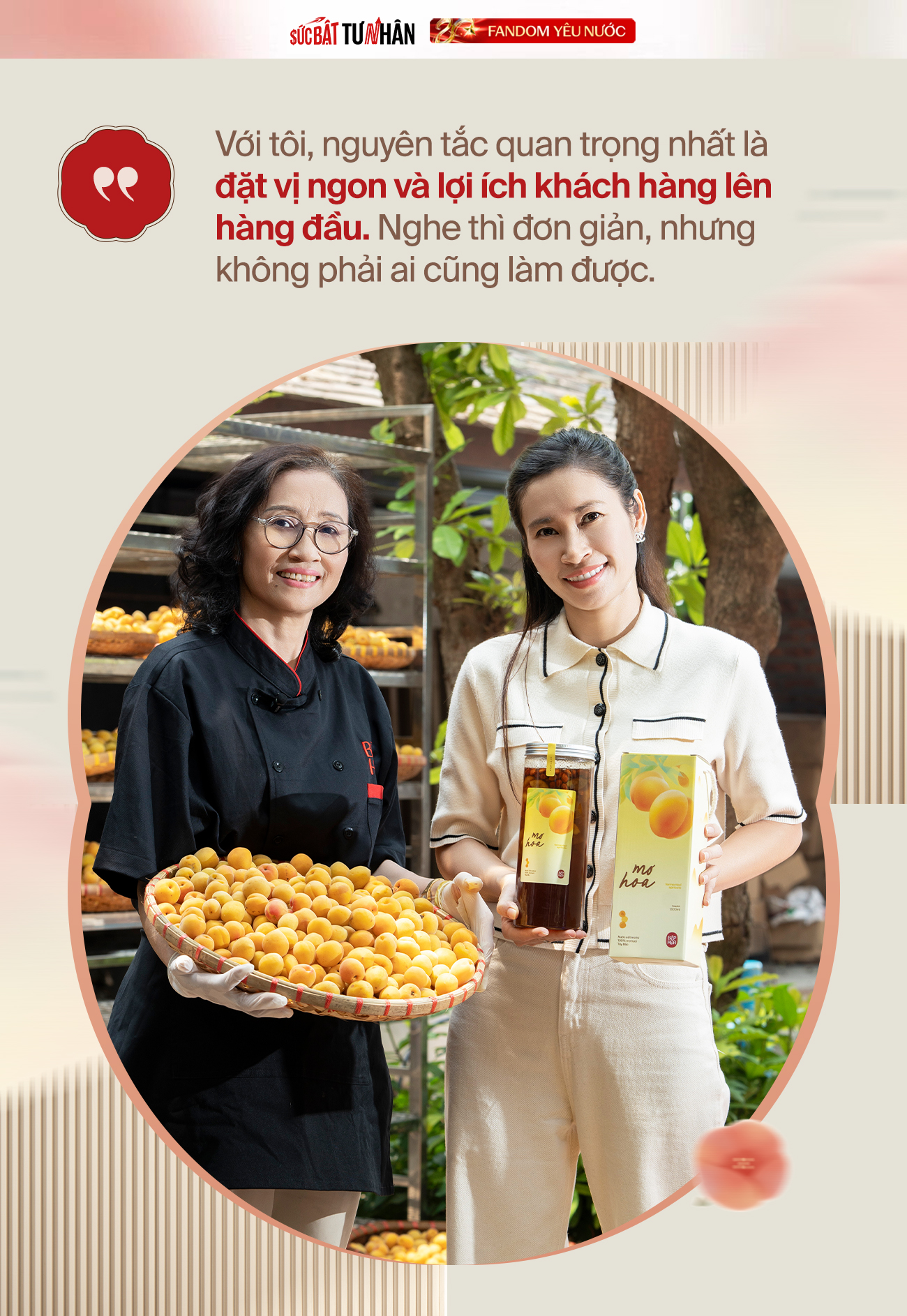

Covid-19 presented a harsh test for the F&B industry, but you saw it as an opportunity to enter the market. What do you think was Hoa’s Kitchen’s biggest advantage during that period?
I always tell myself that opportunities like this come only once, so I must cherish and nurture my current business. Hoa’s Kitchen became a shining “case study” during the pandemic.
When all restaurants had to close, customers relied solely on online food delivery. Hoa’s Kitchen, initially an online kitchen, quickly became one of the leading brands in this field. We had already established a professional system for online orders, delivery, and customer care, and I was fortunate to seize this opportunity. After the pandemic, consumer habits changed, and people became accustomed to ordering food online, which continued to be our strong suit.
However, I realized that customers still perceived Hoa’s Kitchen as a small kitchen. Some asked, “Does Hoa’s Kitchen have five employees?” when, in reality, we already had several dozen staff members. This prompted me to change customers’ perceptions and showcase ourselves as a professional F&B brand, not just an online kitchen.
Even amid the pandemic, I decided to rent a large space on Nguyen Tuan street to maintain our online operations and establish a restaurant. Many advised against opening a restaurant during a pandemic, but I knew the crisis would eventually pass. If a brand doesn’t plan for the long term and only focuses on the present, it will eventually decline. So, I accepted the high cost of renting a large and beautiful space, and looking back, it was the right decision. Today, we have four restaurants.
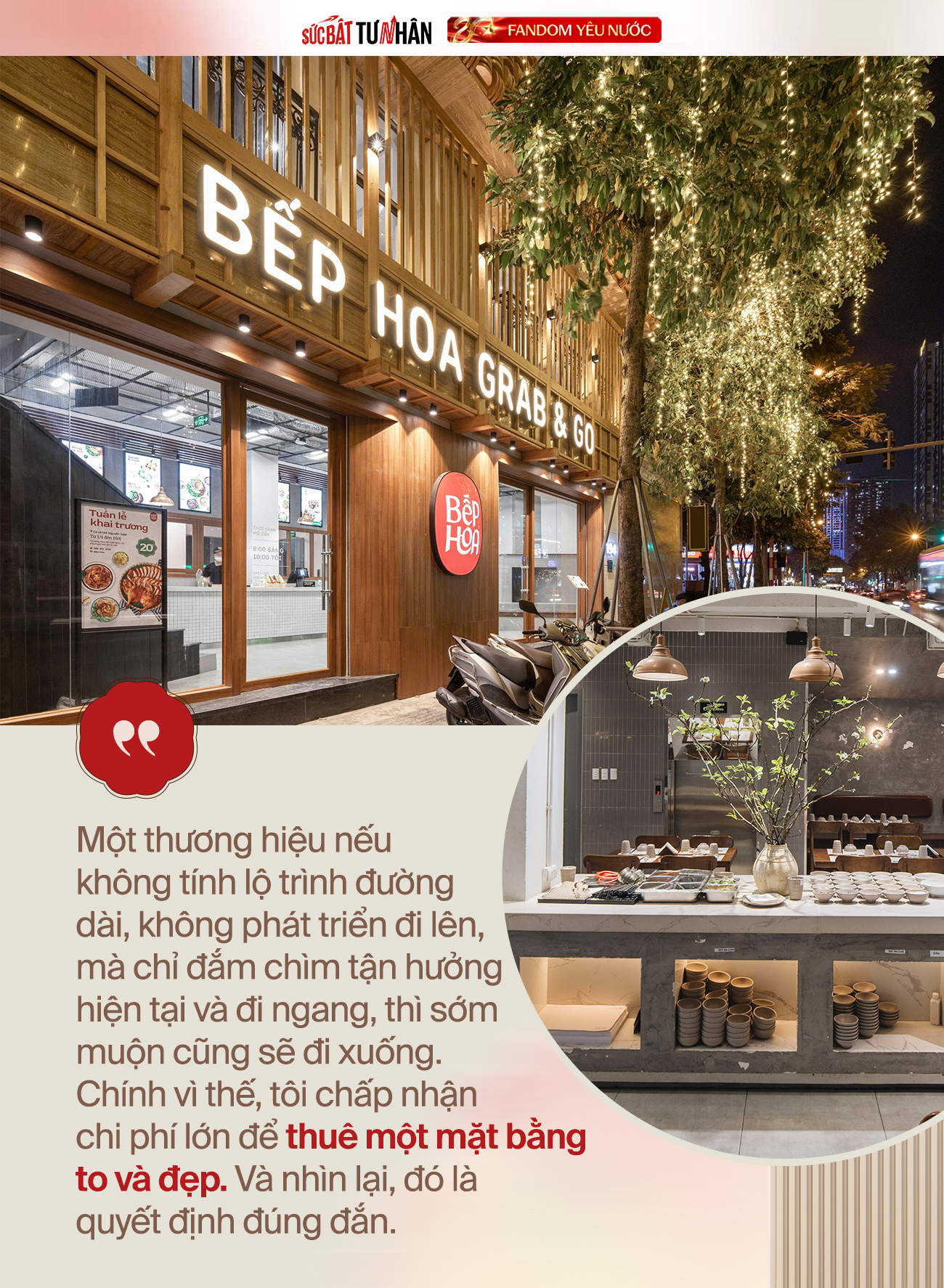
As you transitioned from an online kitchen to a restaurant while maintaining online operations, what challenges did you face in balancing the cost of meals and operational expenses?
Running both an online kitchen and a restaurant presented complex challenges. Our online meal portions were generous, but when we introduced the same portions in the restaurant, customers commented that the servings were too large.
If we reduced the portions in the restaurant and kept them the same online, it wouldn’t work because our revenue would decrease. However, if we maintained large portions in the restaurant while keeping online portions the same, it would also be problematic. So, we had to stick to large portions, which meant that the restaurant’s cost was very high, and there was almost no profit.
Online operations have lower overhead costs, and customers receive good value for their money. However, offering the same large portions in the restaurant increased our expenses significantly, leaving little to no profit. In my opinion, doing business is not about selling at high prices to make money but about delivering real value to customers. If you focus solely on your profits, customers might come once but won’t return.
I am a picky eater, so from day one, I insisted that our food must be delicious. Our philosophy is to put customer satisfaction first, and only then will we be able to build a long-lasting business. If you focus too much on profits, customers might visit once but won’t return. Our chefs are very strict about ingredient quality, sometimes to the point where suppliers get annoyed because we only select the best parts and return the rest. Despite the challenges, I stand by this decision.
Many people say that Hoa’s Kitchen is “expensive,” but the cost lies in the ingredients. I firmly believe that if I enjoy the food, my customers will too. Every day, our chefs have the privilege of cooking with the best ingredients. Anyone in the culinary field would appreciate this opportunity.
To be honest, I don’t consider myself to have achieved anything extraordinary. However, I am most proud that in the past five years, I have never compromised on ingredient quality to reduce costs or increase profits. This is also why my employees respect me, and I know I am doing something meaningful.
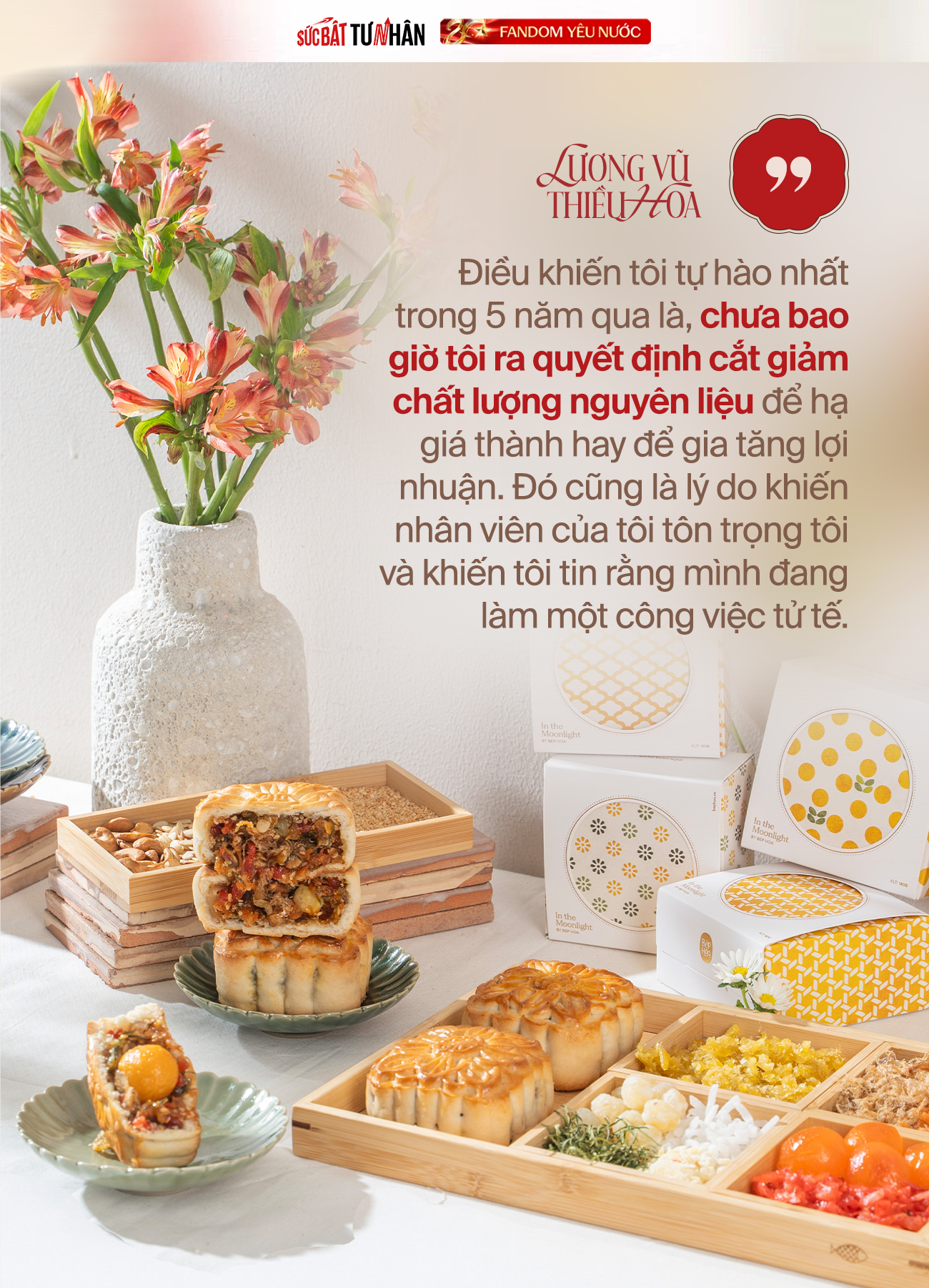
In your opinion, what sets Hoa’s Kitchen apart, allowing it to thrive and expand continuously over the past five years?
I believe Hoa’s Kitchen’s success lies in three factors: delicious food, aesthetic presentation, and a diverse menu. Maintaining a menu of nearly 100 dishes is no easy feat. As a leader, I have built a strong work culture where our chefs take pride in their kitchen, are committed to their work, and consistently deliver high-quality meals.
I divide our team into smaller groups, each responsible for a specific group of dishes. This approach hones their skills and ensures consistency in our dishes. Additionally, we always listen to customer feedback and make adjustments promptly. I am very detail-oriented, so maintaining quality is a top priority every day.
Currently, which aspect is the main “pillar” of Hoa’s Kitchen—online sales or the restaurants?
Our revenue is evenly split between online sales and our four restaurants. However, online sales remain the main pillar that supports our company and employees. Running a restaurant is costly, and it’s challenging to recoup those expenses. The past two years have been difficult economically, and many F&B businesses have opened and closed. It’s easy to open a restaurant or café, but sustaining and growing it is incredibly challenging.
Online operations also come with their own set of challenges, especially regarding delivery. In your experience, what is the most difficult aspect of online food delivery?
One significant challenge with online sales is that orders tend to集中在特定的时间段内。午餐订单主要集中在11点至12点之间,晚餐订单集中在晚上6点至7点之间
Tân Tân Watches: Four Decades of Trust and Integrity
Trust is earned, not given, and at Tan Tan Watches, we’ve walked the talk. Our unwavering commitment to integrity isn’t just a slogan but a way of life. From the moment we open our doors to the second we bid farewell to our valued customers, upholding our values is a daily practice, as steady and reliable as the ticking of a clock.
The Ultimate Brazilian Delight: A Taste of Vietnam’s Finest Exports.
“A Brazilian family recently indulged in a culinary adventure, sampling two of Vietnam’s renowned specialties. Their reaction? Pure delight! They couldn’t stop raving about the exquisite flavors and proclaimed the dishes to be ‘absolutely fantastic,’ taking their taste buds on a journey beyond mere excellence.”
Cleared for Takeoff: CHIN-SU Phở Story Soars with Vietjet Airways
On December 4th, Masan Consumer Holdings and Vietjet Airlines signed a strategic partnership agreement to bring CHIN-SU Phở Story, a Masan Consumer brand, and the essence of Vietnamese cuisine to Vietjet’s domestic and international flights. This collaboration aims to promote Vietnamese culture to the world by offering delicious and authentic culinary experiences to passengers and tourists alike.

